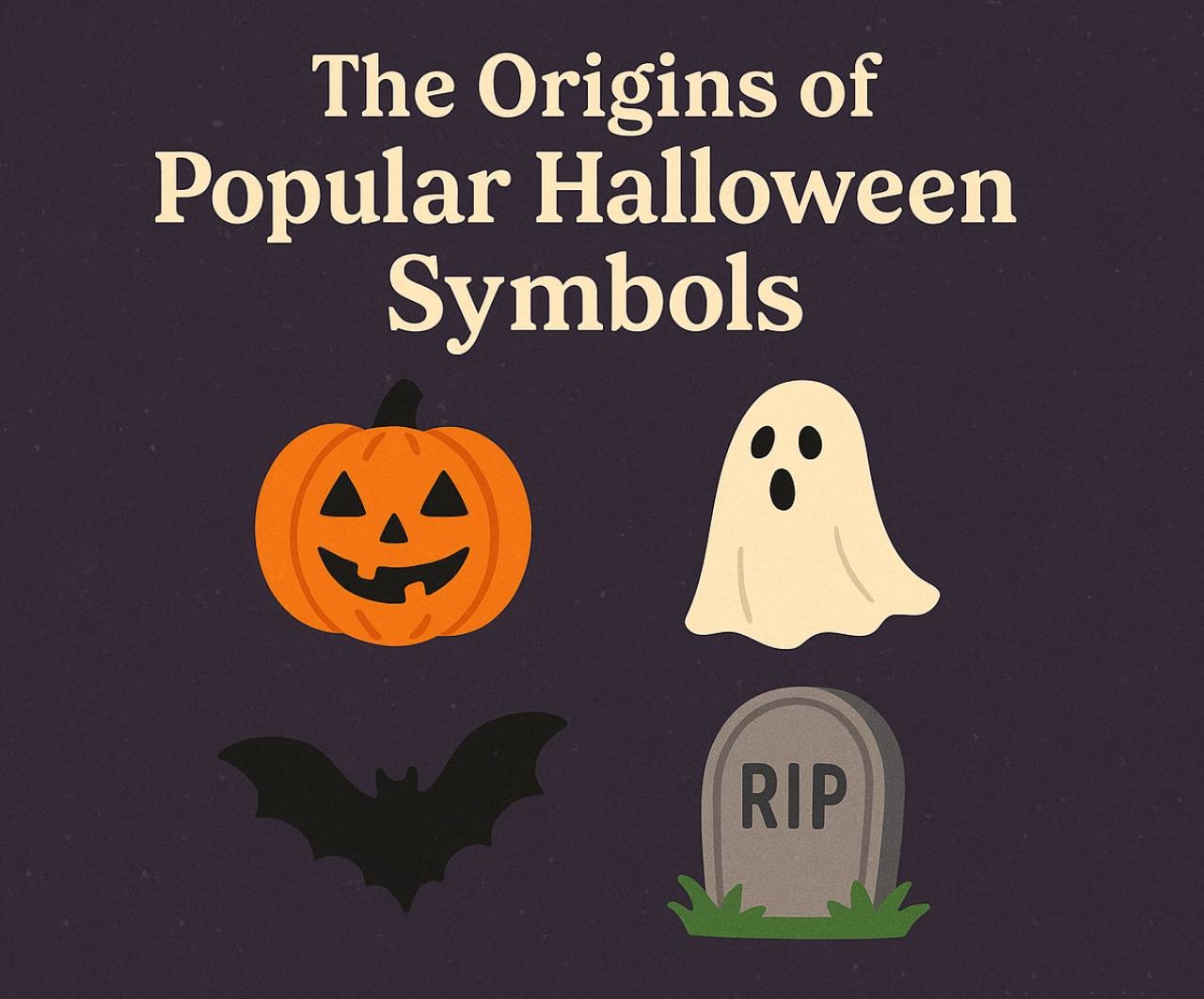The Origins of Popular Halloween Symbols

Halloween, one of the most beloved holidays worldwide, is a mix of ancient traditions, folklore, and modern pop culture. Every year, people decorate their homes with classic Halloween symbols like jack-o’-lanterns, dress up as witches, and encounter the eerie presence of black cats. But where did these symbols come from? Let’s explore their fascinating origins and how they became essential to this spooky celebration. Know more..
Jack-o’-Lanterns: The Fiery Faces of Halloween
The glowing jack-o’-lantern has become one of the most recognizable symbols of Halloween. The tradition originates from the Celtic festival of Samhain, during which people carved faces into turnips and placed burning embers inside to ward off wandering spirits. The legend of Stingy Jack, an Irish folktale, further popularized the concept. Jack, a trickster who outwitted the devil, was cursed to roam the earth with only a carved-out turnip lantern to light his way.
When Irish immigrants brought the tradition to America, they found that pumpkins—native to the region—were easier to carve than turnips. Over time, the jack-o’-lantern evolved into the iconic pumpkin-faced decoration we know today, a staple of Halloween celebrations worldwide.
Witches: The Enigmatic Figures of Folklore
The image of the witch flying on a broomstick, casting spells, and stirring potions in a bubbling cauldron has deep roots in medieval Europe. During the Middle Ages, people believed witches had the power to communicate with spirits and practice dark magic. The fear of witches led to widespread hysteria, culminating in infamous witch hunts such as the Salem Witch Trials in the 17th century.
However, the association between witches and Halloween comes from Samhain, when the Celts believed the veil between the living and the dead was at its thinnest. Shamans and wise women, often seen as witches, were thought to possess special powers during this time. Today, witches are a staple of Halloween costumes, decorations, and films, embodying both the spooky and mystical elements of the season.
Black Cats: Omens of Luck or Doom?
Few Halloween symbols are as controversial as black cats. In many cultures, they are seen as omens of bad luck, largely due to medieval European superstitions. It was believed that witches could transform into black cats or use them as familiars to carry out magical deeds. This belief led to widespread fear and mistreatment of black cats, a superstition that persists in some places today.
However, not all cultures view black cats negatively. In ancient Egypt, they were revered as sacred animals, and in Japan and Scotland, they are considered symbols of good fortune. Regardless of their reputation, black cats remain an essential Halloween icon, adding an air of mystery and superstition to the holiday.
The Grim Reaper: The Personification of Death
Draped in a flowing black robe and wielding a scythe, the Grim Reaper represents death itself. This haunting figure dates back to the 14th century during the time of the Black Death, when artists depicted death as a skeletal being collecting souls. The Grim Reaper’s presence in Halloween imagery symbolizes the connection between the holiday and the spirit world, reminding us of life’s fleeting nature.
Spiders and Webs: Creepy Crawlers of the Night
Spiders are common symbols of Halloween, often depicted weaving eerie webs in haunted houses and graveyards. In folklore, spiders were believed to be messengers from the afterlife, their webs symbolizing fate and the passage of time. Their connection to witches further cemented their place in Halloween lore, as it was said that seeing a spider on Halloween night meant a deceased loved one was watching over you.
Conclusion: A Celebration of Folklore and Fear
Halloween’s most popular symbols, from jack-o’-lanterns to witches and black cats, are rooted in history, mythology, and superstition. These eerie icons have stood the test of time, evolving from ancient rituals to modern decorations and costumes. Understanding their origins adds depth to our Halloween traditions, making the celebration even more thrilling and meaningful. So next time you carve a jack-o’-lantern or see a black cat cross your path, remember the centuries of folklore that brought these symbols to life.
